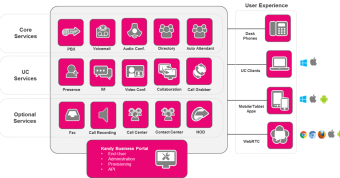Why Context Is King
In a world where everybody and everything can be connected, when machines and humans can interact in an exponential variety of ways, the opportunity to understand behavior better and serve up more useful and entertaining experiences is becoming the real, real-time communications game.
It was back at the turn of this century that the term “Content is King” was all the rage, with the growing digitization of music, movies, television, news and information as the Internet began to explode. Keeping up with the innovations made possible through the delivery of streaming content, and watching the near extinction of physical forms of music storage (records, 8-tracks, cassettes, CDs, Walkman, iPod) along with gaming devices (Atari, Nintendo, Game Boy, PlayStation, Xbox) and movies and television (videotapes, DVDs) it was easy to point to a common driver – content – as the real “money.”
Social media created an entirely new world of what we used to call “user generated content” which forced us to rethink where value was going to be created in the future. With the extreme growth of Facebook, Twitter, Instagram, and dozens of other social domains, we became each other’s content and entertainment, faster than many music, entertainment and television companies could keep up with, causing non-stop disruption throughout the content sphere.
But still content – whether manufactured by a Hollywood studio or created by new Internet stars – remained fundamental to the success of any communications channel.
Then mobility happened. Smartphones and geolocation and geospatial technologies burst onto the scene, and so enamored were consumers by the simplest bait, like a two-for-one coupon for a cup of overpriced coffee, that millions then hundreds of millions of people agreed to have their movements tracked, their privacy whacked, and their lives recorded and shared “live” from wherever they happened to be.
As a society, we began to consume information and content at record levels and speeds as the “24 Hour New Cycle” became our own “24 Hour Life Cycle” and a new way of digital living that retailers, brands, advertisers and service providers began to leverage.
The Art & Science of Persuasion in A World Where Context is King
Money still makes the world go round, and the creation of money comes through the evolution of business. We make things, we sell things. People have choices to buy a lot of different things, and today they want to find things and buy things in many different ways. Any enterprise or business that is not tuned into the psychology of what drives “the yes” will fail, and fail fast.
Context simply means, for marketers for example, finding just the right person, with just the right desires, at just the right time, in just the right place. Does this sound impossible to do at scale?
It’s not. We’ve been tracking buying behavior forever, but the technology and science has brought behavioral data and analysis to a new level, and this has been driven by the new economics of contextual, digital life.
Here’s a simple example. I have to go to the drugstore to buy razors and razor blades. I’ve figured out if I have my smartphone with me and my mobile shopping app available, I can get better deals on razors and razor blades while accumulating loyalty points. I walk into the drugstore and the beacon system silently senses my presence and pulls up my preferences. While I’m walking to the shaving section, it has already processed the last time I was in the store, what I bought, which brands I preferred, and in what combinations. By the time I get to the shaving section, I receive an offer for a combination purchase of blades and shaving cream, with an additional offer to try a related shampoo and conditioner, which if purchased will generate a $10 loyalty reward.
Not only am I in the middle of a 3D “Amazon”-like experience, I am there and now I’m saving an extra $10 so I wonder what else I need, and head over to the birthday card section. I reach for a card for my twelve-year-old niece, and am prompted to check out the deals at the fragrance counter for a pop star perfume.
This is not a bad thing for me. I’m a busy person, and I appreciate this experience which saves me time and money, gets me the products I need, and helps me get back to my family or my work faster.
When Context is King, Are There Unexpected Consequences?
We’re all very aware of the downside of privacy even as we give up more and more information – including our location – but there’s software for that too. Next time you download a “convenience” app before you agree to everything, at least read the line items and make a decision about whether or not you really do want that app to access your camera for example.
In fact, the more software that empowers consumers to not be found if they don’t wish to be, or when they don’t wish to be, the more likely the notion of contextual experiences will become more acceptable and therefore more pervasive.
Who knows, perhaps in the near future we will replace “contact centers” with “context centers” with a blend of software and mobile driven experiences combined with human guidance, not just “bots” which is a topic I’ll cover in a future post. Will the new Context Center serve up real-time human experts to help answer questions, solve problems and at the end of the day – sell more stuff? In situations where expensive products and services are being sold – for example buying a $10,000 home theatre, or a $15,000 luxury vacation, or even a $75,000 Tesla – being able to speak with an authentic expert armed with beautifully rendered information about the products via a browser/human interface is very attractive indeed.
We’re already selling this as a platform via Kandy.io’s concierge application, WebRTC-based and while we are only at the beginning of this new wave, we are seeing an ocean of opportunity as how we all adapt as humans in an increasingly digital and contextual world, which is looking very bright to us.




